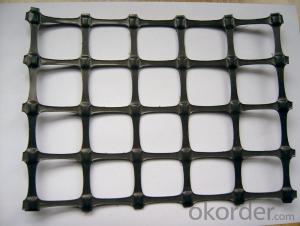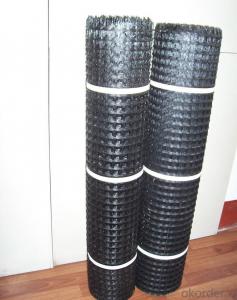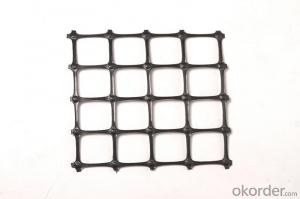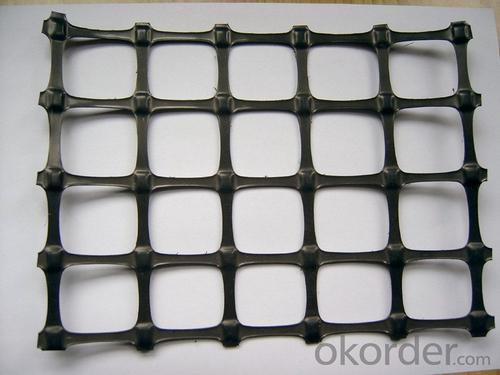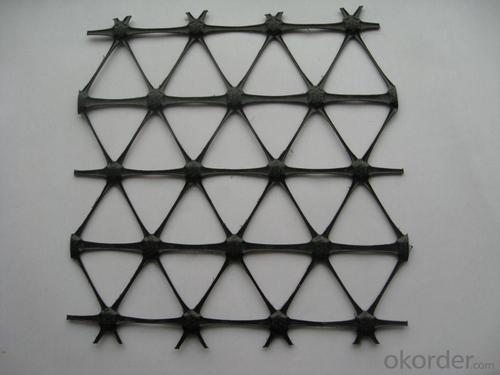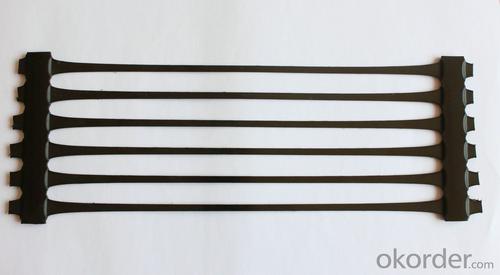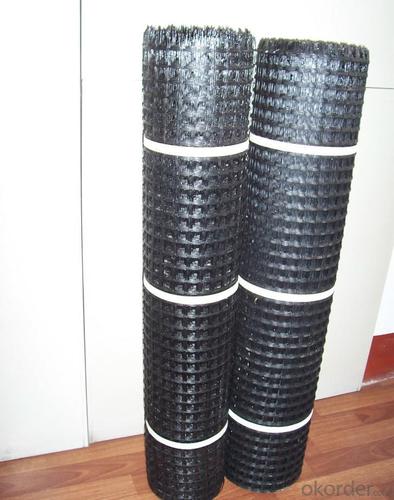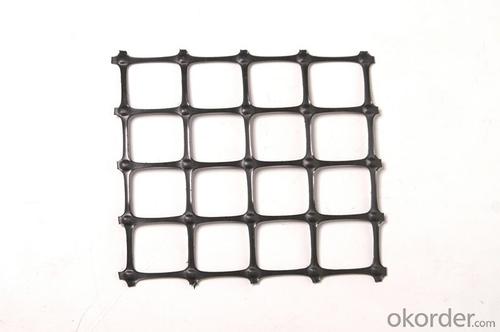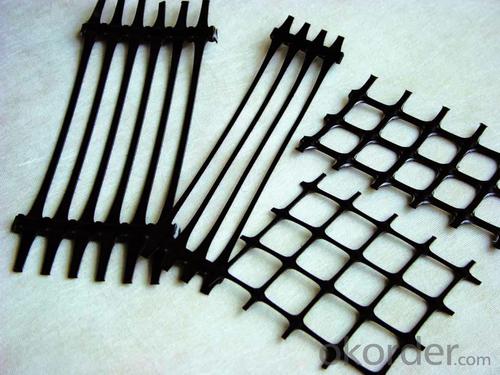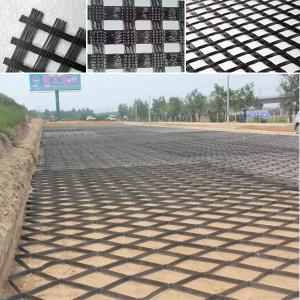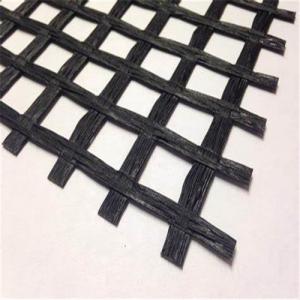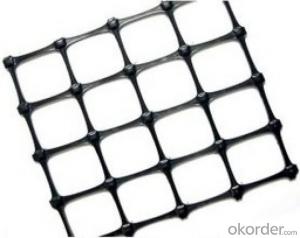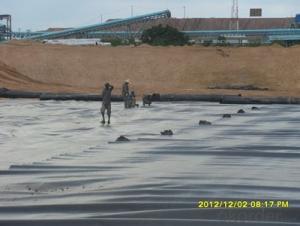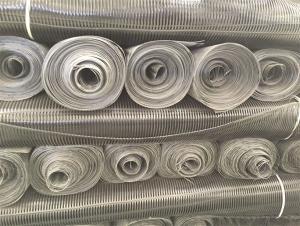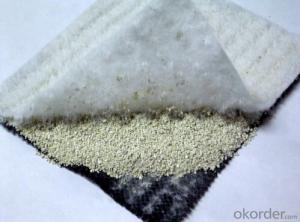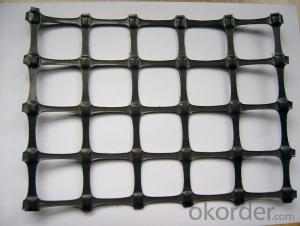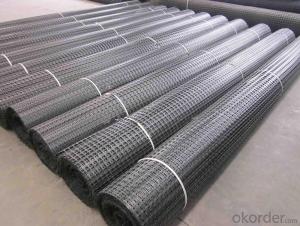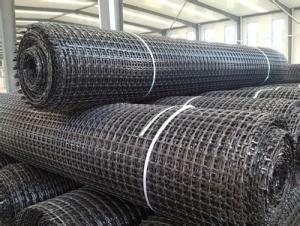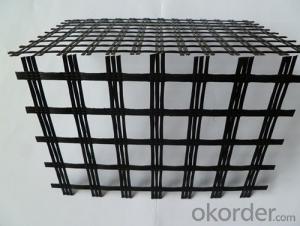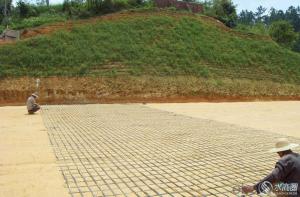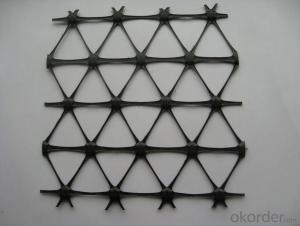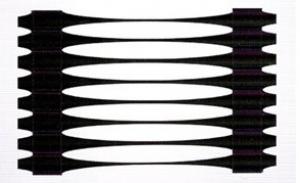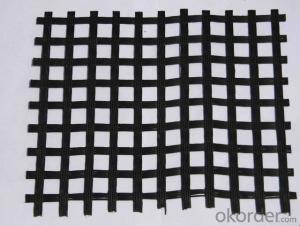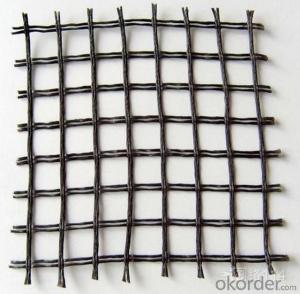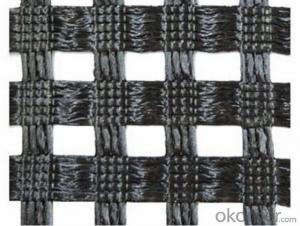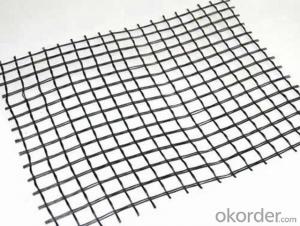Hanes Geogrids Fiberglass for Soil Reinforcement
- Loading Port:
- Qingdao
- Payment Terms:
- TT OR LC
- Min Order Qty:
- 50000 m²
- Supply Capability:
- 2000000 m²/month
OKorder Service Pledge
OKorder Financial Service
You Might Also Like
Fiberglass Geogrid Used for Soil Reinforcement
Description Of Fiberglass Geogrid Used for Soil Reinforcement:
Fiberglass geogrid is based on fiberglass woven cloth coated with modified bitumen or PVC, it was developed to address the problem of pavement cracking on highways, roads and runways, driven by a need to reduce cost for infrastructure maintenance and repair.
It is characterized by high tensile strength in axial and lateral directions, low stretch rate, alkali-resistance, low temperature- resistance, as well as convenience in construction and low price. It can be used on pitch pavement to prevent cracks and prolong pavement service life. It also can be used as a basal reinforcement material for hillsides, reservoirs, harbors, ports, water channels, seawalls, etc.
Main Features of Fiberglass Geogrid Used for Soil Reinforcement:
1.High tensile strength, low elongation.
2.No long-term creep: the product can keep for a long time performance.
3.Thermal stability: fiber glass melting temperature above 1000 ℃.
4.The compatibility with asphalt.
5.Physical and chemical stability.
Specifications of Fiberglass Geogrid Used for Soil Reinforcement:
Tensile Strength (KN) | Warp | >30 | >50 | >60 | >80 | >100 | >120 | >150 | >200 |
Weft | >30 | >50 | >60 | >80 | >100 | >120 | >150 | >120 | |
Elongation(%) | <4< p=""> | <4< p=""> | <4< p=""> | <4< p=""> | <4< p=""> | <4< p=""> | <4< p=""> | <4< p=""> | |
Mesh Size(mm) | 25.4*25.4 | 25.4*25.4 | 25.4*25.4 | 25.4*25.4 | 25.4*25.4 | 25.4*25.4 | 25.4*25.4 | 25.4*25.4 | |
Elastic Modulus | 76 | 76 | 76 | 76 | 76 | 76 | 76 | 76 | |
Width(m) | 1~6 | 1~6 | 1~6 | 1~6 | 1~6 | 1~6 | 1~6 | 1~6 | |
Length(m) | 50~300 | 50~300 | 50~300 | 50~300 | 50~300 | 50~300 | 50~300 | 50~300 | |
Temperature Resistant(℃) | -100~280 | -100~280 | -100~280 | -100~280 | -100~280 | -100~280 | -100~280 | -100~280 | |
Resin Content (%) | 18~20 | 18~20 | 18~20 | 18~20 | 18~20 | 18~20 | 18~20 | 18~20 | |
Glue Type | Bitumen PVC SBR soakage | Bitumen PVC SBR soakage | Bitumen PVC SBR soakage | Bitumen PVC SBR soakage | Bitumen PVC SBR soakage | Bitumen PVC SBR soakage | Bitumen PVC SBR soakage | Bitumen PVC SBR soakage | |
Applications of Fiberglass Geogrid Used for Soil Reinforcement:
Strengthen bitumen concrete roadway and reduce and prevent various kinds of reflection gaps on roadway.
1.Suitable for highway, railway, airport road of subgrade enhancement.
2.Suitable for the large parking lot and port freight yard that the foundations of the permanent load increased.
3.Suitable for railway, highway slope protection.
4.Suitable for culverts.
5.Suitable for the uniaxial tensile geogrid reinforced soil secondary enhancement, after further enhance soil, prevent soil erosion.
6.Mining, tunnel reinforcement.
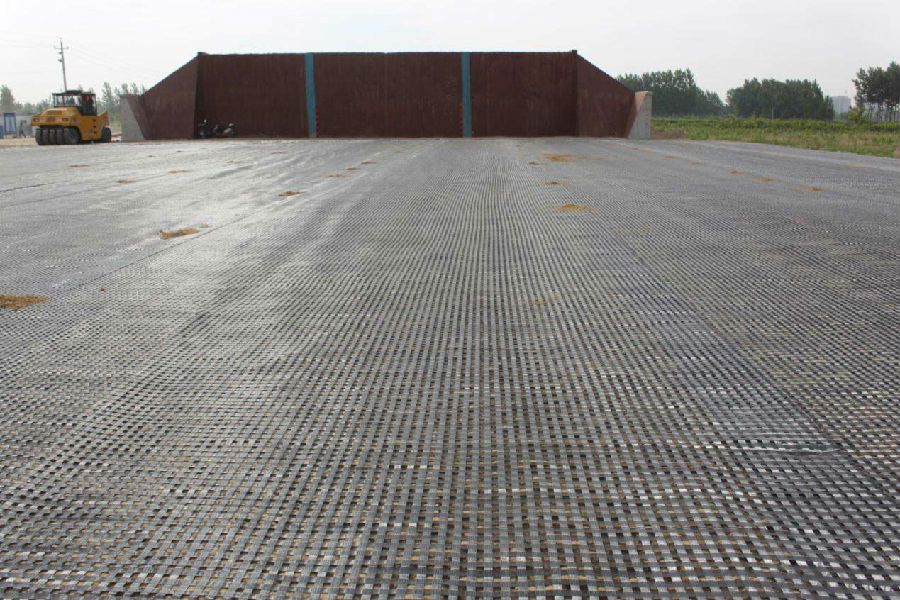
IMages of Fiberglass Geogrid Used for Soil Reinforcement:
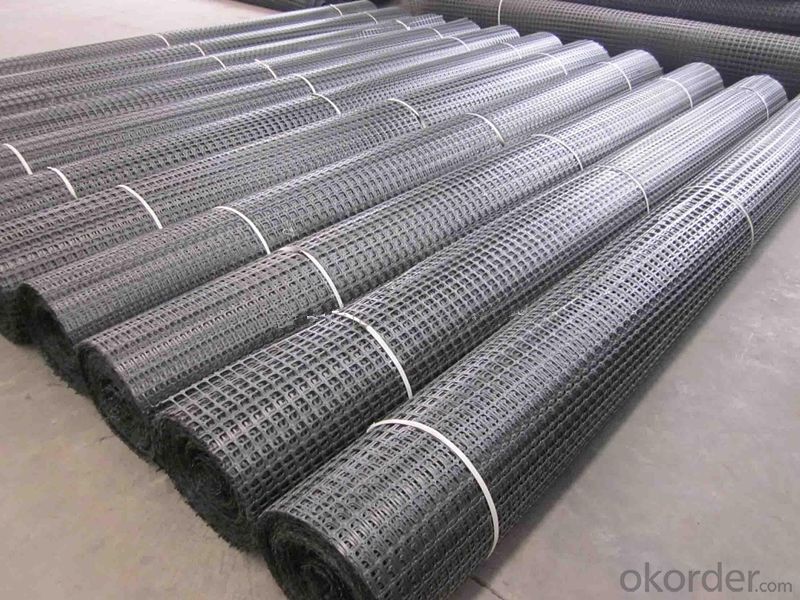

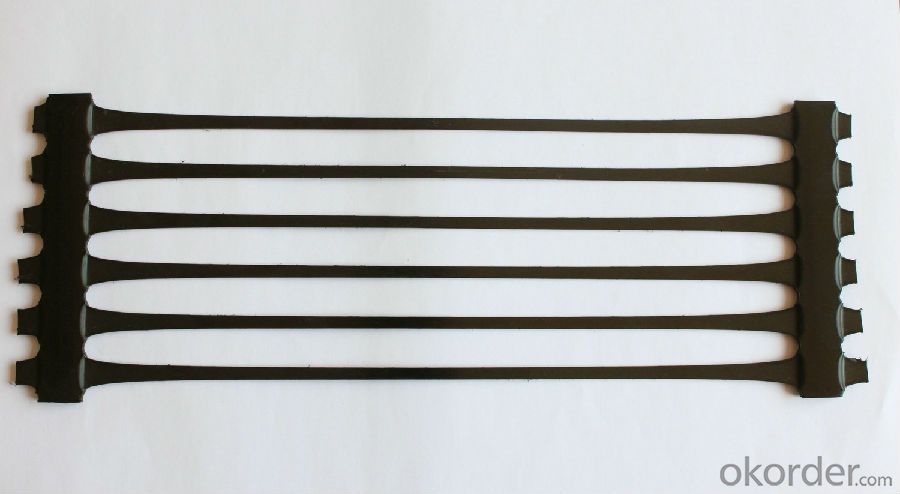
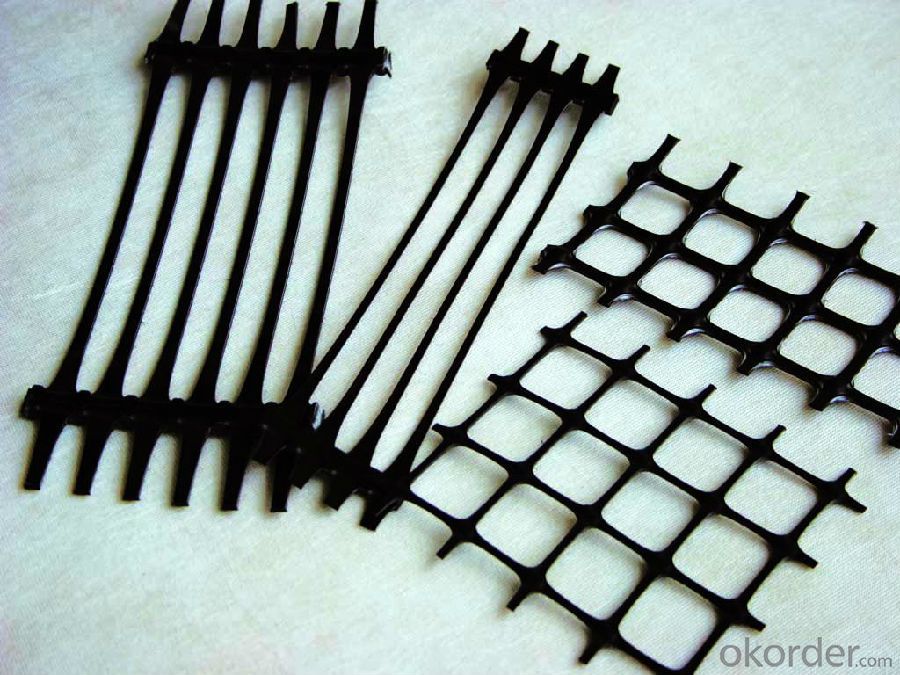
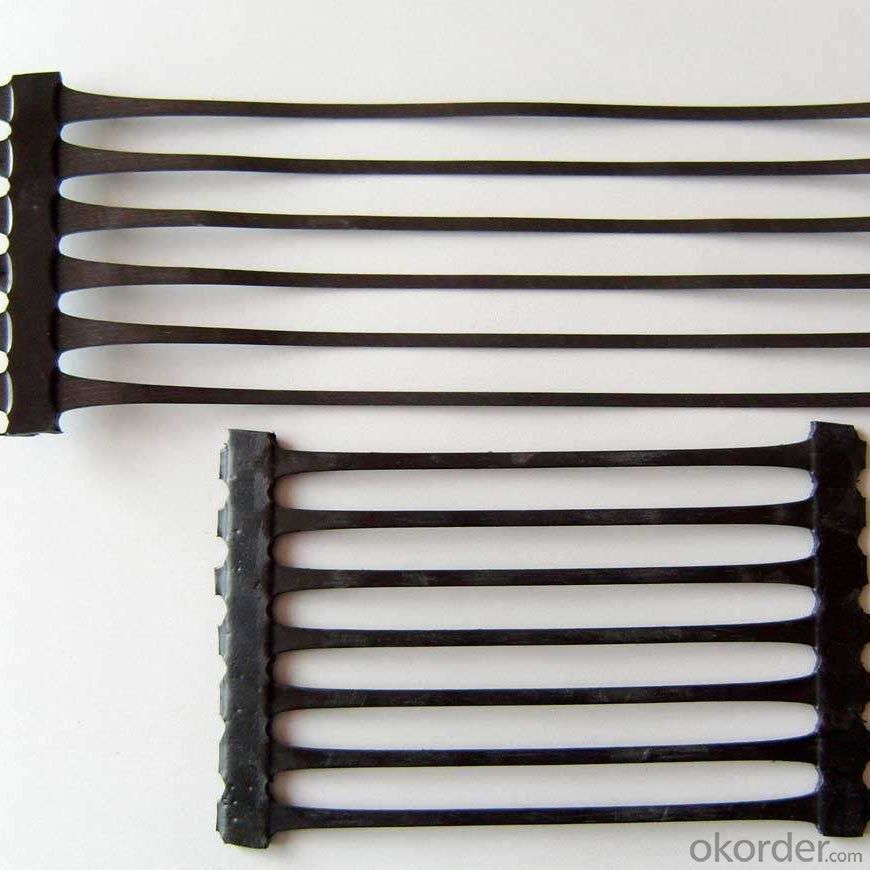
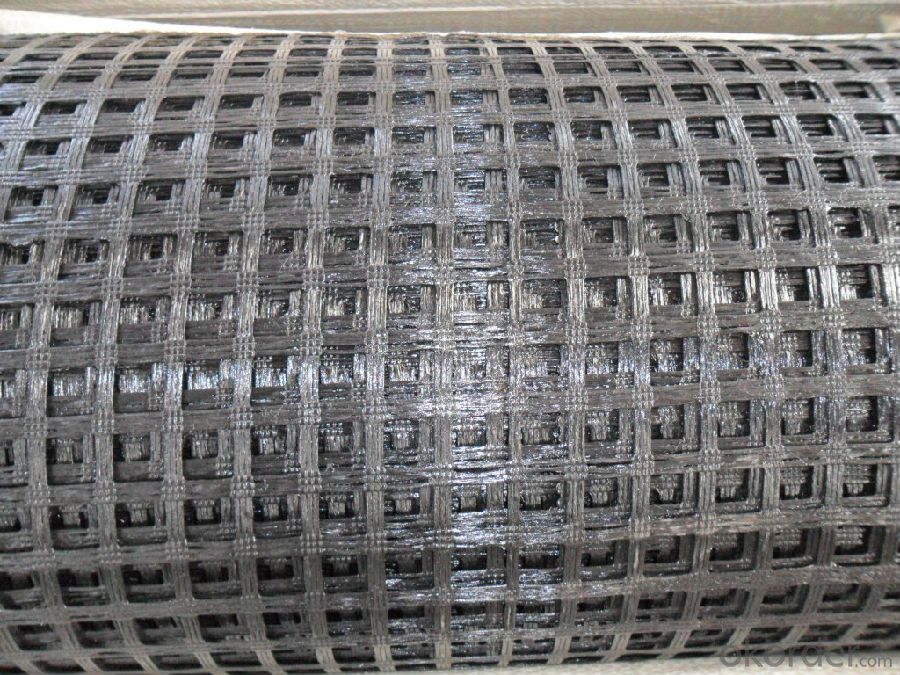
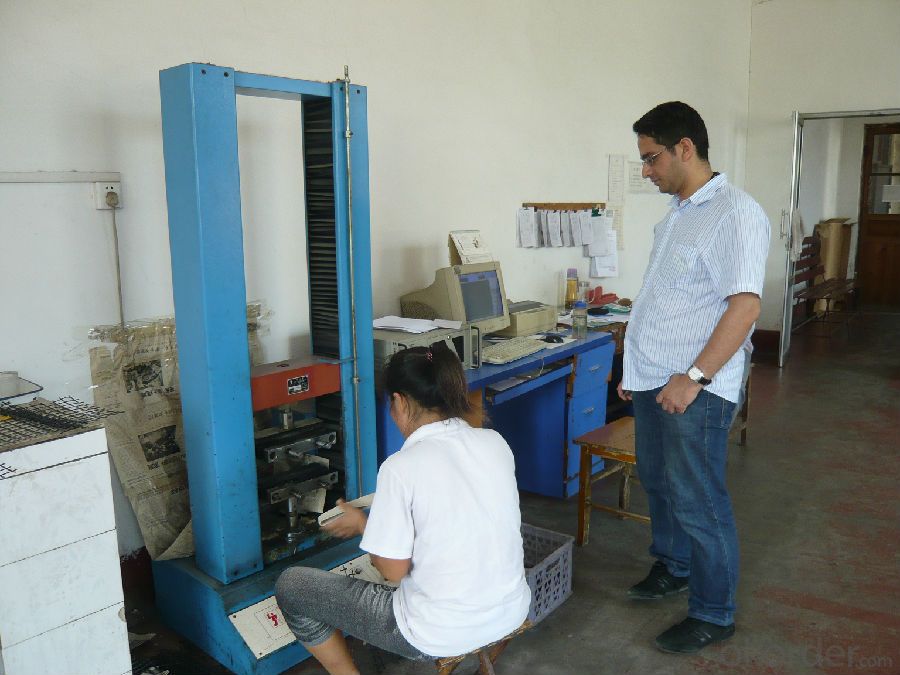
FAQ of Fiberglass Geogrid Used for Soil Reinforcement:
1. What are we supplying?
We are specialized in producing Geosynthetic materials, like Geogrid Series, HDPE Geocell, Geonet, Geotextile, Geomat, Tri Denmensional Composite Grainage Geonet, and Geomembrane Series.
.
2. How Many years experience do we have?
We have been exported to more than 20 countries in the past 15 years.
3. How long do we usually reply your request?
We always reply our customer within 24 hours.
- Q: Can geogrids be used in temporary construction access roads for wetlands?
- Yes, geogrids can be used in temporary construction access roads for wetlands. Geogrids are commonly used in road construction to reinforce and stabilize the soil, especially in areas with poor ground conditions. They can help distribute loads, prevent soil erosion, and provide a stable surface for heavy machinery and vehicles. In the case of temporary construction access roads for wetlands, geogrids can be an effective solution to minimize environmental impact and protect the delicate ecosystem while providing safe access for construction activities.
- Q: Are geogrids resistant to hydrostatic pressure?
- Yes, geogrids are generally resistant to hydrostatic pressure.
- Q: Can geogrids be used in green roof applications?
- Yes, geogrids can be used in green roof applications. Geogrids provide reinforcement and stability to the green roof system, helping to prevent soil erosion and retain water. They can help distribute the load of the green roof evenly, ensuring structural integrity and longevity.
- Q: Can geogrids be used in stabilization of mine waste dumps?
- Yes, geogrids can be used in the stabilization of mine waste dumps. Geogrids are commonly used in geotechnical engineering to reinforce soil and provide stability to various structures, including mine waste dumps. By incorporating geogrids into the design and construction of mine waste dumps, the overall stability and integrity of the dump can be significantly improved, reducing the risk of slope failures and erosion. Geogrids help distribute loads, increase bearing capacity, and enhance the overall performance of the dump, making them an effective solution for stabilization in mine waste management.
- Q: Can geogrids withstand heavy loads?
- Yes, geogrids are designed to withstand heavy loads. They are commonly used in civil engineering and construction projects to reinforce soil and provide stability, even under significant weight or pressure. Geogrids have high tensile strength and durability, enabling them to effectively distribute and transfer loads, making them suitable for various applications such as roadways, retaining walls, and reinforced slopes.
- Q: Can geogrids be used in reinforcement of pavement overlays?
- Yes, geogrids can be used in the reinforcement of pavement overlays. Geogrids are commonly used as a reinforcement material in pavement construction to enhance the strength and durability of the pavement structure. They are placed between layers of pavement materials to distribute loads and reduce cracking, rutting, and other forms of pavement distress. Geogrids help to improve the overall performance and lifespan of pavement overlays.
- Q: How is a geogrid different from other geosynthetic materials?
- A geogrid is a type of geosynthetic material that differs from others due to its unique structure. Unlike geotextiles or geomembranes, which are typically made of woven or non-woven fabrics, a geogrid is composed of a grid-like pattern of polymers or metals. This grid structure provides the geogrid with exceptional tensile strength, allowing it to distribute loads more effectively and enhance soil stability. Geogrids are commonly used in applications such as reinforced soil slopes, retaining walls, and pavement systems, where their high strength and stiffness offer significant advantages over other geosynthetic materials.
- Q: Steel wire mesh is a kind of geotechnical material
- The total area of the grille rib, rib steel wire grid as much as possible is less than the opening area, in order to ensure the mechanical occlusion compared with the interlocking effect. That is to say, to make the mesh as much as possible to bite the soil area, in order to give full play to the role of occlusion. But the mesh size should not be too large, otherwise the stiffness of rib is small, but the bite force decreased. Three. The ribs and ribs of the grid should be perpendicular to each other so as to transfer the load more effectively. If both are not vertical...
- Q: Can geogrids be used in erosion control applications on steep slopes?
- Yes, geogrids can be used in erosion control applications on steep slopes. Geogrids are often used to reinforce soil and prevent erosion by providing stability and support to the slope. They can effectively distribute loads and reduce the risk of slope failure, making them suitable for erosion control on steep slopes.
- Q: How do geogrids improve the performance of reinforced soil slopes?
- Geogrids improve the performance of reinforced soil slopes by providing structural stability and enhancing the overall strength of the slope. They act as a reinforcement material that helps distribute the forces and stresses evenly throughout the soil. This prevents the soil from sliding or settling, thereby increasing the slope's capacity to withstand external pressures such as erosion, loading, and seismic activity. Additionally, geogrids also improve the slope's drainage capabilities and help control soil erosion, further enhancing its performance and longevity.
Send your message to us
Hanes Geogrids Fiberglass for Soil Reinforcement
- Loading Port:
- Qingdao
- Payment Terms:
- TT OR LC
- Min Order Qty:
- 50000 m²
- Supply Capability:
- 2000000 m²/month
OKorder Service Pledge
OKorder Financial Service
Similar products
Hot products
Hot Searches
Related keywords
